I’m lucky to coach remarkable people who impress me with their determination to improve as runners—reaching goals, going farther and faster—in spite of real-life challenges that compromise their ability to train. One of my clients is a high-risk obstetrician and mother who works 24-hour shifts yet manages to run before or after work. Another is the chief creative officer and founder of a design firm, also a mom, who often gets her training done on a treadmill after her girls go to bed.
All of my clients have interesting and impressive stories, but I want to spotlight one person in particular, because coaching him since January has inspired me as a coach and ultrarunner.
If you think training for a 100-miler is challenging, imagine doing it with a severe visual impairment. You can barely see the trail, so you rely on guides and on an app that gives you turn-by-turn directions. You can’t listen to music or a podcast as you run, and you can’t space out, because all of your senses must be highly attuned to detecting what’s in front of you to find your way. You can’t drive yourself to a trailhead to train, so you rely on public transportation or rides from friends to get to races and training runs. Everything becomes logistically more complicated. Plus, you work a full-time high-pressure job, and you have a long commute, leaving very limited time to train during the work week.
This is the story of my client Will Barkan, who’s legally blind due to an inherited form of juvenile macular degeneration, and how Will nailed his first 100-miler a couple of weeks ago, the Tahoe Rim Trail Endurance Run.
Will, who’s 35, contacted me in January 2018 because he heard me co-host UltraRunnerPodcast, and he realized that we both had graduated from the same high school, Thacher School in Ojai, he in 2002 and me in 1986. We consequently realized we knew a lot of people in common and had the same bonding experience of attending this unique boarding school, which requires students to care for a horse and to go on week-long camping trips during each school year.
In his first message to me, Will mentioned almost offhandedly, “One of my persistent challenges with running races longer than 50Ks is running trails in the dark. I’m legally blind, and running single track, especially in low light, is pretty tough.”
I checked out his Facebook page and discovered photos of him through-hiking the Pacific Crest Trail solo in 2016. How did he accomplish that? I concluded he must have a great deal of courage and determination, which made me eager to coach him.
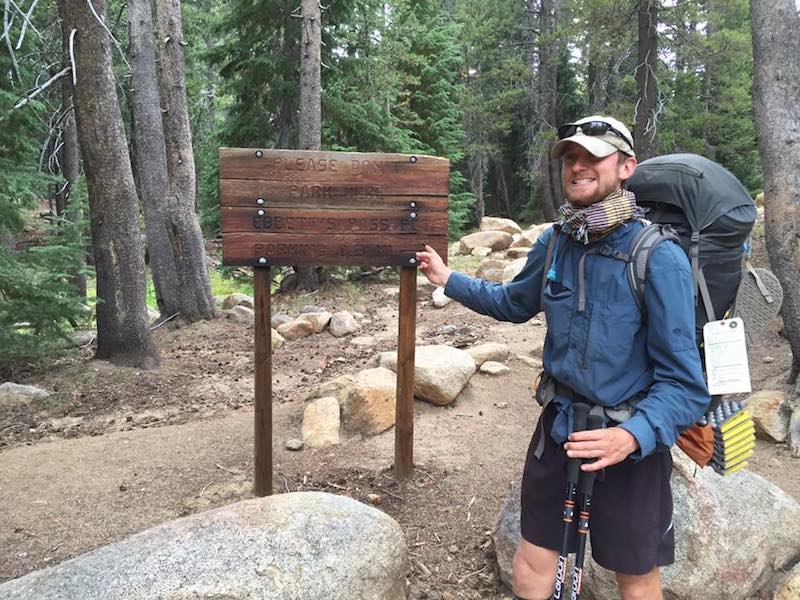
Will and I met, and he explained he has Stargardt’s Disease, an uncorrectable degenerative retinal condition that destroys central vision but leaves peripheral vision intact. “Typically someone with Stargardt’s cannot read text without assistance devices, drive, or recognize faces,” Will explained. “In my case I’m legally blind and sometimes have difficulty spotting small tripping hazards during the day. I’m unable to run safely at night on trail or road and need the use of sighted guides to call out obstacles. It also tends to impact speed of descent. Generally I can’t react quickly enough to hazards to run at my best downhill pace.”
Will lives in San Francisco and takes a Google shuttle to Sunnyvale, where he works as a senior strategist for Google’s Trust & Safety team, which he says involves making sure ads are safe for users and prevents malicious interference on Google’s products.
A runner for most of his life, Will ran his first trail 50K in 2017, and in 2018, he graduated to the 100K distance and nurtured a goal to run 100 miles. He decided to hire me as a coach, and we started working together in January of this year.
Will chose the Tahoe Rim Trail 100 as his goal race because he wanted a mountainous 100-miler, but one not too technical, and not too far away from his team of friends who’d serve as guides and crew.
Mapping out his six-month training block, we scheduled several races to serve as supported long runs and to practice race-day strategies. We made a plan to focus first on a strong performance at the Lake Sonoma 50 in mid-April, after which he’d take a week off for recovery and then shift to very specific peak training for the TRT100.
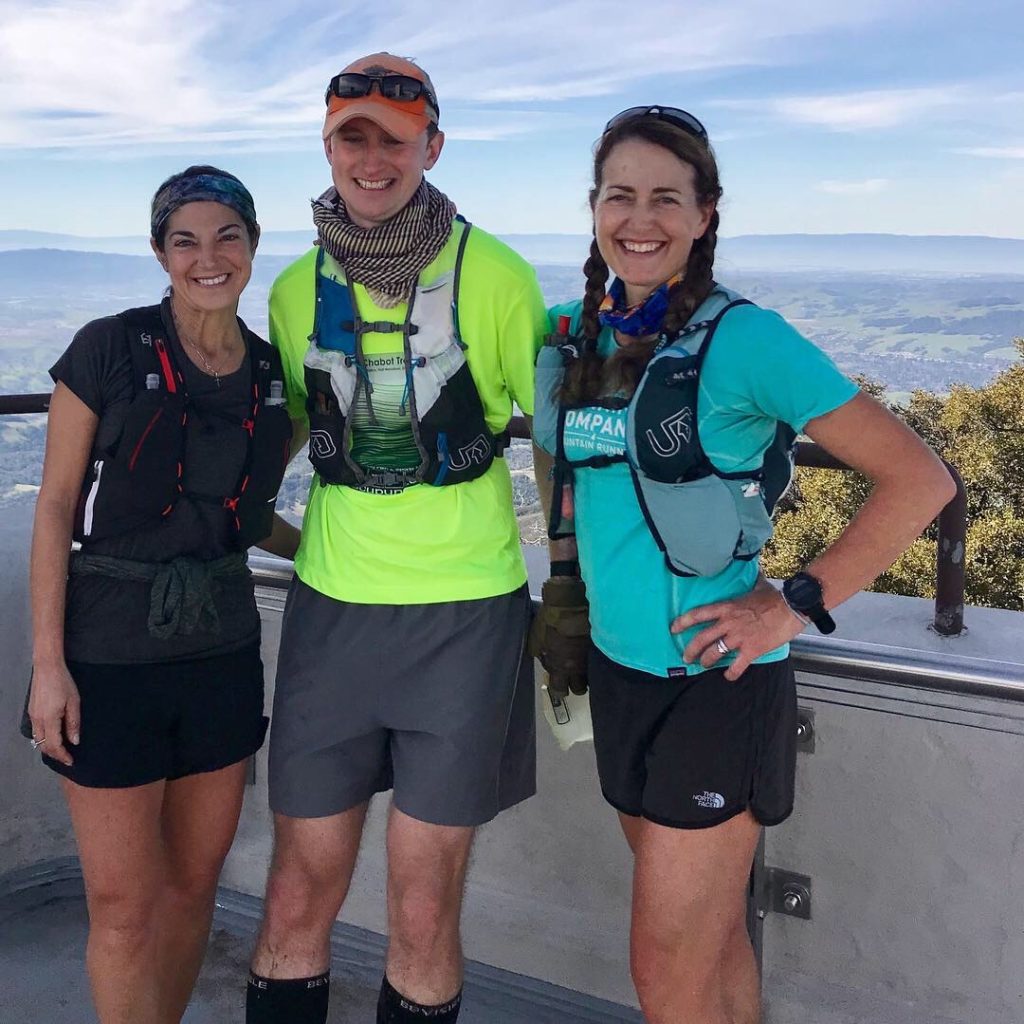
Following a schedule that included weekly speedwork, hillwork, strength conditioning and a weekend long run, Will ran well at all of his spring races: the Montera Mountain Marathon in February, the Marin Ultra Challenge 50K in March (where he PR’ed at the 50K with a 4:59), and then the Lake Sonoma 50 in 10:55.
Following Sonoma, we developed a schedule that added more heat, more elevation gain, and long runs that would better simulate the challenges he’d face in Tahoe. The TRT 100 features 18,000 feet of elevation gain and reaches an altitude of about 9,000 feet.

Most of Will’s trail running takes place in the Marin Headlands, because he can run from his house across the Golden Gate Bridge to the trails there, thus avoiding the need to drive. For Tahoe training, I wanted him to experience different trails with a greater variety of terrain, and in hotter climates. I also wanted him to do back-to-backs and to run at different times of the day.
During peak training, Will managed to participate in the Western States three-day training camp and to take a weekend trip to Tahoe to train on the course at altitude. He also added one more challenging 50K to his schedule for a long training run, the Ohlone 50K in May. He learned to run with trekking poles and worked on training his gut to digest on the run, deliberately starting runs later in the day after eating. His training volume, while not extremely high, was high enough, with weekly mileage totaling between 60 to 70 miles for each of the six weeks before he started to taper.
During the work week, especially when he had to travel for work, Will made good use of the treadmill. I assigned him runs that would combine easy and high-intensity running on the treadmill, followed by powerhiking practice, during which he’d elevate the treadmill to a high incline and carry weights in his hands or in a backpack for added resistance.
Will fine-tuned a plan with his crew and trained his guides to accompany him at night. We fortified his mental preparation by talking through the challenge of running and hiking through the second morning after going all night, realistically assuming his finish time would be in the 30 to 32-hour range.
On the weekend of July 20 – 21, all of Will’s preparation paid off. He finished the TRT100 in 30:44, 74th out of 156 finishers. Another 79 runners dropped out and did not finish.
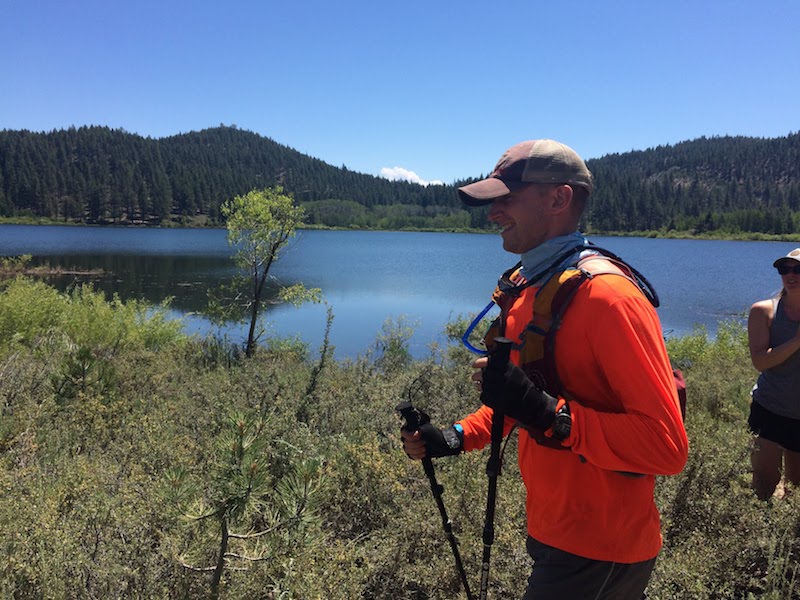
Here’s a Q&A with Will about the experience:
Me: How much different and harder was your first 100-miler compared to your previous 100K?
Will: Quite a bit harder overall, although my training made me feel strong enough that I didn’t feel like I was fading until the 85-mile mark on the second day.
How much could you see or not see during the TRT100, and how did you manage it?
Generally I don’t see fine details right in front of me and can’t always see the depth of obstacles on the trail as well as most. During the daytime I did pretty well on the nicely groomed trails. During the night I could barely see the trail, let alone the steps and hazards. I also have difficulty finding what I want at aid station tables and take a little longer at aid stations.
My team of guides, Chris Gudas, Jamie Lefkowitz and Ethan Quinn, led me the last 50 miles. We used a series of high-powered lights, and they called out terrain type, steps, drops and nearly every rock on the trail. Guiding takes tremendous concentration and some training as well. When I run during the day without a guide, I need to be extra careful and double check turns. I use an app called RunGo that keeps me on track with audio navigation of the course.
Did you trip and fall at all during the race? I noticed you wore padded gloves on your hands; did they help in case you fell?
I fell once at Mile 8 or 9 when I missed a small granite lip that caught my toe. I fell into the bushes, and my “ninja gloves” were great in protecting my hands. I wear them whenever I run at night or on unfamiliar trails. They save my hands from a lot of boo-boos.
What were some of the best moments of TRT100?
Having my friend Kim catch up to me at the first Diamond Peak aid station; the halfway mark with my friends and family giving me the energy for another lap [the TRT100 features two laps of the 50-mile course]; and running the Red House Loop in the dark with my guide and seeing the disco aid station.
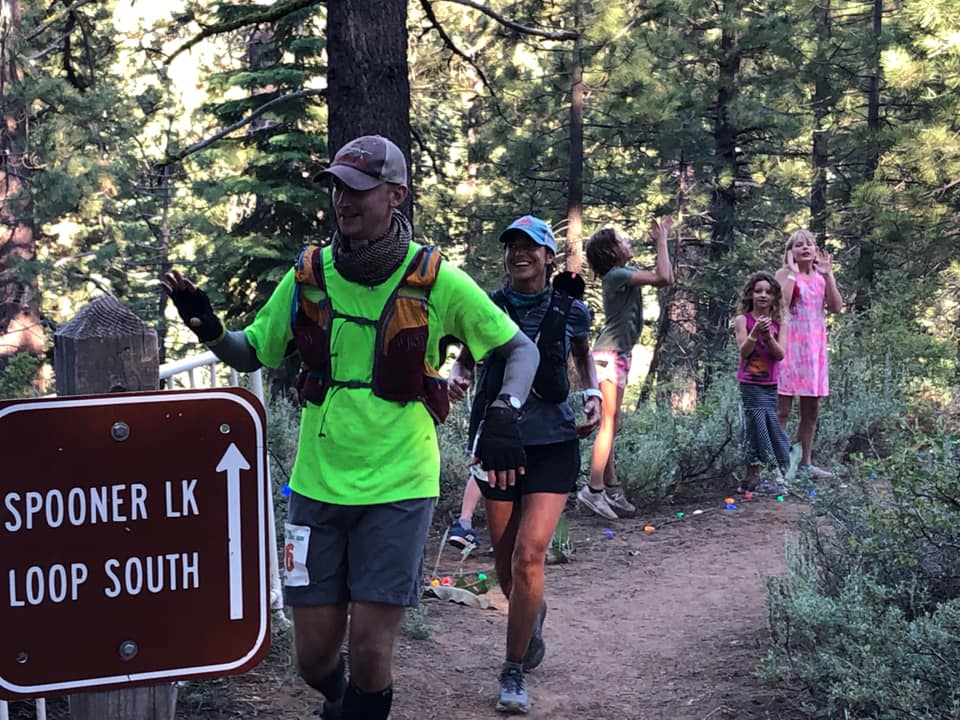
Describe the disco aid station.
Chris (my guide) and I were well into the Red House Loop, Miles 62 – 68.5. It was dark, we had wet feet, and it was farther than I had ever run before. I knew there was an aid station there during the day, but I was not sure if they had it there at night. Then we saw the disco lights and lit pathway up to the aid station—there were enough lights that I could see it. When we arrived there was a Thanksgiving feast served by a crew in full 1970s disco garb, and I ate mashed potatoes, Coke and soup. It was funky and glorious.
And what were some of the lowest, most challenging moments?
My stomach from Miles 35 – 42 felt terrible, and I felt like I was going to need the toilet or need to puke. Miles 85 – 90 were mentally the most difficult in the morning heat. My mind was very fuzzy, and eating was next to impossible. My guide kept pushing me to run when all I wanted to do was walk.
How did you manage your stomach during those rough miles?
I used soda at every aid station, crackers, and Tums when I felt like I was going to puke. It was hard to get a waffle down but I managed to choke down one. I’m not sure any of the remedies helped, but running with Kim kept me focused on the race and not on my stomach. It got way better after dark.
Out of all the workouts you did, and conversations we had, to prepare you for your first 100, what were the things that you felt prepared you best for the challenges of TRT?
Focusing on powerhiking, running what I could run and hiking the hills hard. The dreaded SLS treadmill uphill workout with weights helped me feel strong when hitting hard hills.
In hindsight, is there anything you wish you had done differently in training or on race day?
I wish I’d trained more with trekking poles in the dark and trained more at altitude. During the race I would have liked to use even more liquid fuel during the warmest parts of the day. I also wish I had brushed my teeth.
How are you feeling now? Was it worth it?
It was worth it. It felt pretty incredible particularly to do the race with my guides and crew, and the other runners. It was a very special run with some crying at the end. I’ve got some post-race blues. Going back to work Tuesday was a bit of a drag, but I’m slowly feeling like I can run again.
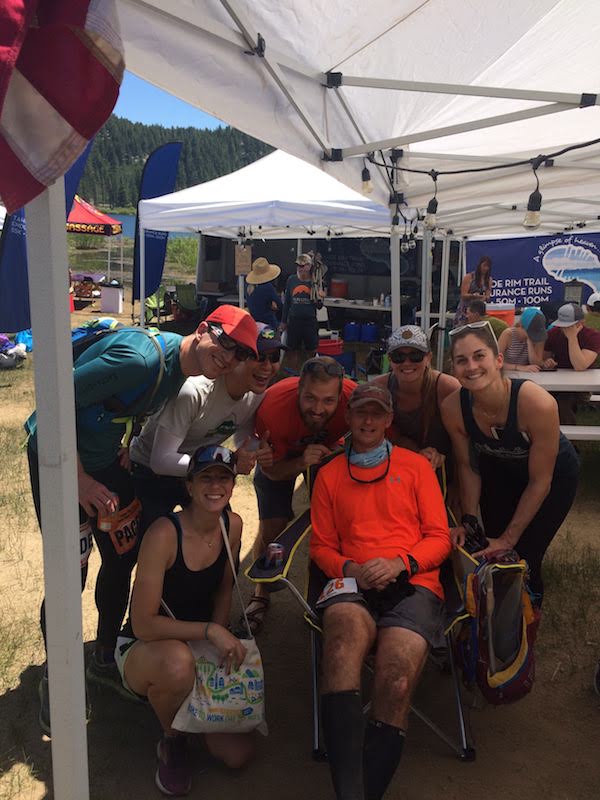
How do you feel you’ve developed as an ultrarunner since we began working together in January?
I am more disciplined about my training. In particular, focusing on weekday runs and making the time to do them right is a big area of growth. This last training season helped me structure my limited weekday free time into rigorous training. As a result I got much better at climbing hills and much faster all around.
If you could share one piece of advice with other aspiring ultrarunners training for their first 100-miler, what would it be?
Prepare to block out a lot of time in your life to train. Train with tried legs and you’ll feel like a superhero at Mile 75.
Great job and great advice, Will! Many thanks for letting me share your story.
If you’d like advice about how to structure a training block to build up to an ultra, and how to prepare mentally and logistically as well as physically, then I hope you’ll order a copy of my book, The Trail Runner’s Companion, to make your training as satisfying and successful as possible.

Comments are closed.